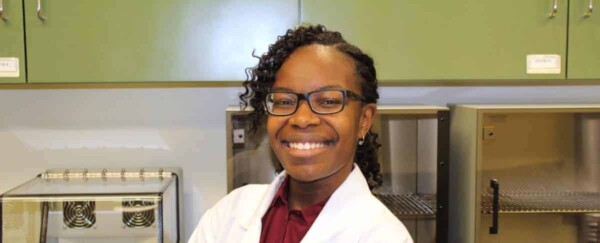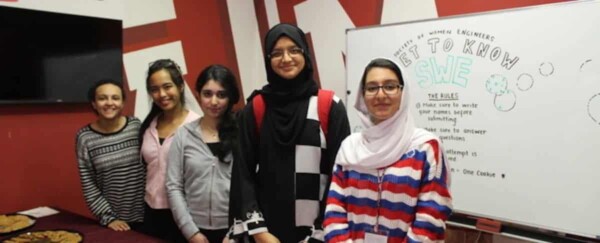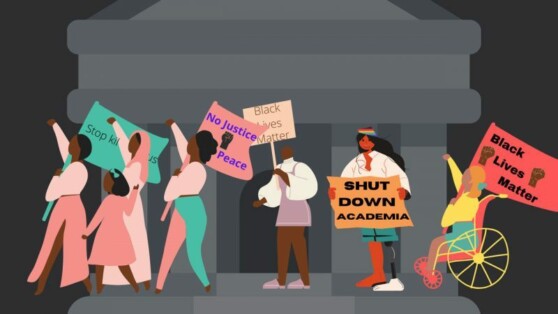
Advances in gender equity over the past few decades are best analyzed from the perspective of the people most uplifted by them. With 20 years experience as an engineering student, professional, manager, consultant and educator, Kimberly Davis, Ph.D., has seen firsthand the changes in female representation within her field. Her wide-ranging experience provides a unique viewpoint of an industry that still represents only a fraction of the population but impacts all of it.
Pushing against cultural attitudes regarding women in STEM, Davis grew excited about engineering at a young age. Her father had been an engineer and spoke highly of his career; Davis herself had a natural aptitude for math and attended an engineering magnet high school. She went on to earn both a bachelor’s and a master’s degree in industrial engineering from Texas A&M University, then found an entry-level systems engineering position with a defense aviation contractor. The plan was to work her way up the corporate ladder, but her natural curiosity led her to enroll in an MBA program. To balance her new commitment, Davis tried her hand in auditing, which led her to understand how her engineering skills added value in other areas, before she eventually returned to defense aviation. She took a job at a consulting firm that was later acquired by Deloitte, earned her doctorate in systems engineering from GW, began teaching at her alma mater, married and had a son.

Paving the Way for a Feminine Future in Engineering
Considering that only 30 percent of women with an engineering bachelor’s degree stay in the industry for more than 20 years, Davis’ long-standing career is a testament to her talent and her character. Navigating corporate sexism is difficult in any industry, and the pressure can feel more intense when you’re the only woman in the room.
“Twenty years ago, I wasn’t sure if it was okay to stick up for myself,” she says. “Hindsight has shown me that doing so was the right call.”
Perhaps the primary reason Davis has had such a successful career was her commitment to herself. With the support of her husband, a former colleague who reassured her whenever she was called bossy or opinionated, she prioritized her well-being, successfully navigating through the industry and finding a professional culture that supports her ambition and her womanhood. She encourages other women struggling with sexism at work to do the same.
“I hope some of the sexism that I experienced doesn’t happen as much, but I know that some women do face it,” she says. “I’d tell those women, ‘You’re not crazy, and you don’t have to sit there and take it.’”
She encourages women to find the right cultural fit when pursuing an engineering education and career. Doing so may include a bit of trial and error, but Davis has seen multiple companies work to create cultures that support diversity, inclusion and equity.
Supporting the Female Engineers of Today and Tomorrow
Conventional career advice encourages women to be their own best advocates and, in many ways, encourages them to act in accordance with male stereotypes. While there are advantages to rebelling against a culture that demands women be acquiescent in all settings, there’s also a danger in forcing women to bear the responsibility of dismantling corporate sexism by themselves. Writing for the Harvard Business Review, researchers Grainne Fitzsimons, Aaron Kay and Jae Yun Kim caution that when such Lean In-style advice dominates the narrative of women in the workplace, people tend to assume that women are solely responsible for fixing the sexism they experience. They also come to believe that women cause such sexism in the first place, thinking women invite discrimination onto themselves by not “acting like a man.”
Luckily, the cultural focus on diversity has encouraged many companies to reconsider their corporate environments and create actionable ways of supporting all of their employees. To support women engineers, Davis encourages businesses to create women-centered sponsorship opportunities where experienced female professionals can advocate for women who are early in their careers. Many existing sponsorship programs avoid focusing on gender, which can appear fair under the guise of gender neutrality. But in reality, men in these programs tend to sponsor men, forcing women to work harder for recognition and prestige. This is discouraging and draining for women, leaving them feeling as though they must put in twice as much effort without the same level of support, and is a likely factor in the high volume of women abandoning professional engineering.
While some companies offer mentorship programs for women and minorities, Davis emphasizes that the two concepts are not the same.
“You can have a mentor who tells you how to do things, but a sponsor will hype you up and bring opportunities your way,” Davis explains. “Women should have the same ease of finding allies and sponsors throughout their careers as men.”
Taking measures to treat men and women equitably extends to family life as well. Davis points out that there is a vast difference between what society expects from working moms versus working dads. Many companies still operate as though women should be expected to sacrifice their careers for their children, while men are expected to sacrifice quality time with their families in order to be providers. The consequences of implementing maternity leave over parental leave affect working mothers and working fathers.
“We’re not going to have equity in the workplace until we have equity at home,” Davis says.
Humanizing the Workplace
Women are often discouraged from displaying so-called feminine emotions at work, but Davis believes that doing so can create a more humanizing environment for everyone involved. By being empathetic and using interpersonal communication skills, women can bring awareness to the greater context of a given situation, resulting in more effective solutions.
“Where is this person coming from?” she encourages people of all genders to ask. “Why are they talking about one thing and not another?”
In one situation, Davis and her team worked on a project that involved reviewing a series of Zoom calls gone awry. In one call, a participant joined late, complaining about his hectic morning. The other participants quickly moved to the topic of discussion, and the latecomer was distracted through the rest of the meeting.
Davis asked her team what they thought of the incident, and many blamed the distracted employee, saying he needed to focus. But Davis pointed out that no one acknowledged that the man was having a stressful morning. No one treated him like an individual. If the other Zoom participants had taken a few moments to acknowledge their colleague’s struggles and thereby help alleviate his stress, he may have been able to concentrate on the matter at hand.
“It’s beneficial for women to bring empathy and intuitiveness into corporate conversations,” Davis says. “And that helps everyone. We’re not just being empathetic toward our female colleagues but all of our colleagues.”
These humanizing qualities and the inclusion of women can lead to more supportive solutions for society as well. Whether through cultural conditioning or biological differences, women can raise issues that men have overlooked.
“As a mother, I often wonder why cup holders in cars aren’t good at holding juice boxes,” Davis noted.
Including female engineers can not only make life more convenient for a significant portion of the population, but it can also make life safer. One long-standing effect of the lack of women in engineering, as shown by research in Consumer Reports, is that women in car crashes are 17 percent more likely to be killed and 73 percent more likely to sustain injuries than men. This discrepancy is not due to inherent differences in male and female driving habits but rather because car safety protocols reflect a model of the average man based on data from the 1970s. Most crash test dummies adhere closely to these standards even today.
“When you make it hard for half the population to enter a field, you lose out on that diversity of perspectives and opinions,” Davis says.
The Next Generation of Women Engineers
Davis’s extensive experience has given her quality advice for women interested in engineering. Her first bit of guidance is simple, but it’s one of the most important steps for finding a rewarding career: Ask yourself what you want to do.
“It’s hard to know what you want your future to be, but think about what you like,” she advises, and encourages prospective students to ask themselves questions like:
- Do I like to work individually?
- Do I want to coordinate across a group of people?
- Do I like to work on a problem for extended periods of time?
“There’s a prestige with certain jobs, but the best prestige is doing what you want to do,” she adds, knowing that some women may feel compelled to pursue engineering management even though it may not be a satisfying career path for them.
But for women who are genuinely interested, Davis emphasizes the advantages of an engineering-specific management degree over one in business. With an MBA and two advanced degrees in engineering, she’s seen the differences between programs.
“To manage engineers, you need to be able to speak their language,” she explains. “You need to understand how different parts of the process relate to each other and be able to identify and communicate what’s happening, what’s wrong and what solutions are needed. Someone without a technical degree won’t be as successful in managing such technical projects.”
Davis’s understanding of business and engineering is a valuable resource, and she delights in seeing what her former students and staff achieve. She’s had multiple students take ideas generated in her classrooms to their bosses and gain the opportunity to lead the projects that result.
“I love seeing people I’ve taught or worked with find something they enjoy doing and build their career,” she says.
That’s the exact type of support young female engineers need to stick with their passion and advance toward more equal representation in the field.
Related content:
- Cultivating Male Allyship
- Podcast: “Good Guys” Supporting Women in the STEM Workplace
- The Importance of Male Allies: A Review of the Literature
- Podcast: Men As Diversity Partners with Ken Fulmer
- What Motivates Men to Champion Gender Diversity?
- Please Join SWE in Welcoming the New HeForSWE Affinity Group!
Author
-

SWE Blog provides up-to-date information and news about the Society and how our members are making a difference every day. You’ll find stories about SWE members, engineering, technology, and other STEM-related topics.






